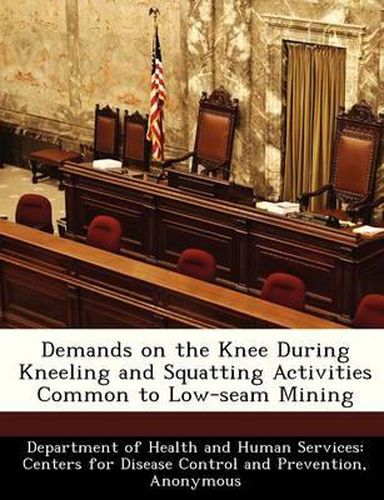Readings Newsletter
Become a Readings Member to make your shopping experience even easier.
Sign in or sign up for free!
You’re not far away from qualifying for FREE standard shipping within Australia
You’ve qualified for FREE standard shipping within Australia
The cart is loading…






In 2009, the operating height of approximately one fourth of underground coal mines in the U.S. restricted mine workers to kneeling, crawling, and/or stooping posture to perform work [MSHA 2009). The large number of knee injuries to these workers is likely attributed to exposure to musculoskeletal disorder risk factors (prolonged kneeling, crawling, and twisting on one’s knees). Therefore, the National Institute for Occupational Safety and Health has investigated three different biomechanical parameters (muscle activity of the knee flexors and extensors, pressure at the knee, and the net forces and moments at the knee) as subjects assumed postures common to low-seam mining, both with and without kneepads. The postures evaluated included: (I) kneeling near full flexion; (2) kneeling near 90 degrees of knee flexion; (3) kneeling on one knee; and (4) squatting. The pressure and the net forces and moments at the knee were evaluated as subjects statically assumed these postures. However, negligible muscle activity existed for these static postures. Therefore, muscle activity of the knee flexors and extensors was evaluated for each posture while subjects performed a lateral lift that is common to low-seam mining where they lifted a 25-lb block from their right side, transferred it across their body, and placed it on the ground on their left side. The results indicated that, relative to the stresses posed by other kneeling postures, some postures had may have more detrimental effects than others. Considering the potential impact of the three biomechanical parameters, several key recommendations were made regarding when it may be most appropriate to use specific postures. Additional recommendations were also made regarding the design of kneepads.
$9.00 standard shipping within Australia
FREE standard shipping within Australia for orders over $100.00
Express & International shipping calculated at checkout
In 2009, the operating height of approximately one fourth of underground coal mines in the U.S. restricted mine workers to kneeling, crawling, and/or stooping posture to perform work [MSHA 2009). The large number of knee injuries to these workers is likely attributed to exposure to musculoskeletal disorder risk factors (prolonged kneeling, crawling, and twisting on one’s knees). Therefore, the National Institute for Occupational Safety and Health has investigated three different biomechanical parameters (muscle activity of the knee flexors and extensors, pressure at the knee, and the net forces and moments at the knee) as subjects assumed postures common to low-seam mining, both with and without kneepads. The postures evaluated included: (I) kneeling near full flexion; (2) kneeling near 90 degrees of knee flexion; (3) kneeling on one knee; and (4) squatting. The pressure and the net forces and moments at the knee were evaluated as subjects statically assumed these postures. However, negligible muscle activity existed for these static postures. Therefore, muscle activity of the knee flexors and extensors was evaluated for each posture while subjects performed a lateral lift that is common to low-seam mining where they lifted a 25-lb block from their right side, transferred it across their body, and placed it on the ground on their left side. The results indicated that, relative to the stresses posed by other kneeling postures, some postures had may have more detrimental effects than others. Considering the potential impact of the three biomechanical parameters, several key recommendations were made regarding when it may be most appropriate to use specific postures. Additional recommendations were also made regarding the design of kneepads.